
The disease of the nasal mucosa is called rhinitis. This disease affects people who have weak immunity, and children. Rhinitis occurs due to hypothermia. After the transferred illness, the immunity is weakened, so the pathogens can enter the nasal mucosa. Either discharge from the nose suggests that another disease is occurring.
How to use an antibiotic Sinusitis in rhinitis, you can understand by reading the article.
Which varieties of chronic rhinitis exist:
- catarrhal;
- hypertrophic;
- is allergic;
- is atrophic;
- vasomotor.
Content
- 1 Types and Features rhinitis
- 1.1 Catarrhal rhinitis
- 1.2 Rhinitis hypertrophic
- 1.3 Atrophic rhinitis
- 1.4 Allergic rhinitis
- 1.5 Vasomotor rhinitis
- 2 Methods for treating chronic rhinitis
- 2.1 Outpatient
- 2.2 Surgery
- 2.3 Medication
- 2.4 Folk remedies
- 3 Consequences of the disease
- 4 Video
Species and features of rhinitis
Catarrhal rhinitis
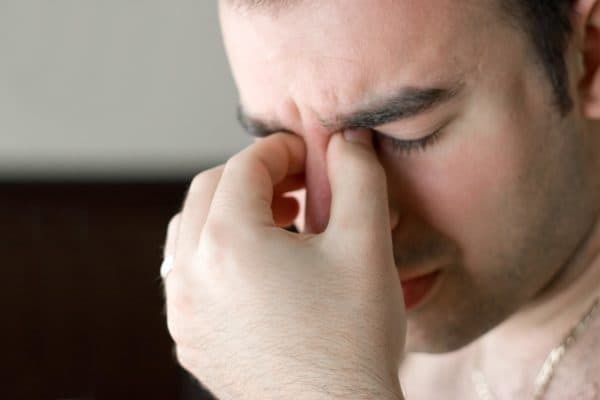
Zatrunennost breath, malaise and discomfort in the nose indicate the beginning of catarrhal rhinitis
There is a burning sensation in the nose, unpleasant sensation, headache, lethargy, breathing becomes difficult .Further mucus concentrates in the nose and further clogs the passages. The general condition also worsens. The person because of impossibility to breathe through a nose, breathes through a mouth that causes an infection of respiratory ways. In the following, the nose is clogged, as thick mucus is formed. This state should be prevented as early as possible so as not to cause negative consequences.
How is treatment of vasomotor rhinitis in adults and what medications are indicated in the article.
You need time to see a doctor, so he conducted a survey using endoscopy of the nasopharynx, ultrasound of the sinuses, and also took on a study of the discharge from the nose. Such diagnostics are primarily carried out by pregnant and young children.
Rhinitis hypertrophic
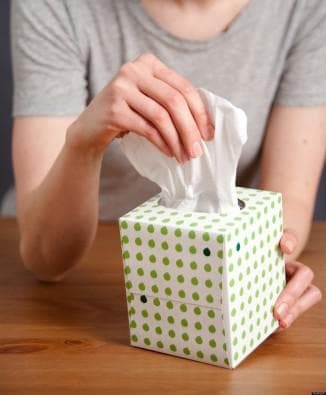 Disease of the nasal concha, due to the increase in the number of bone tissue. What can lead to this state? Inadequate air, dust, gas contamination, hypothermia, allergenic factors. All these factors lead to rhinitis. This type of rhinitis is treated by the surgeon's intervention. But nevertheless there are also conservative methods of solution, about which just below.
Disease of the nasal concha, due to the increase in the number of bone tissue. What can lead to this state? Inadequate air, dust, gas contamination, hypothermia, allergenic factors. All these factors lead to rhinitis. This type of rhinitis is treated by the surgeon's intervention. But nevertheless there are also conservative methods of solution, about which just below.
Chronic hypertrophic rhinitis is divided into 2 types: limited and diffuse.
Atrophic rhinitis
Local dystrophy, affects the nasal mucosa, rarely bone tissue. Disturbances of the digestive system, that is, the stomach and intestines, disruption of the liver, infectious diseases. Children can be influenced by factors such as lack of vitamins, social conditions, mental overstrain. Also, the disease can occur due to injury to the nose.
Having read the article, the camp can understand how to treat vasomotor rhinitis at home and what medicines.
- Simple rhinitis - the front sections of the nose are affected.
- Diffuse.
Allergic rhinitis
Mucous is inflamed due to the action of the allergen. Symptoms: sneezing, itching, burning in the nose. According to statistics, 24% of people in Russia suffer from this disease. Allergy can develop very quickly. From a few seconds to 20 minutes of interaction with the carrier of allergies. A rhinitis caused by an allergy enters the top 3 together with atopic dermatitis and bronchial asthma.
If someone in the family had the same problems, then perhaps the next generation has a risk of developing this disease.
What allergens can be:
-
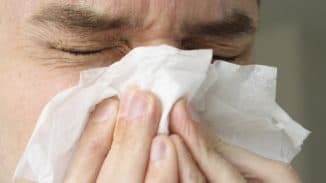 dust;
dust; - pliers;
- allergen, carried by mosquitoes;
- pollen of plants and animals;
- are some foods used for food;
- medications.
The patient has a change in the appearance of the face: edema, red watery eyes. Manifestations of allergies occur even at an early age. There are 3 degrees: light, medium and heavy. Easy degree: working capacity remains at the same level and sleep is not disturbed. Medium: moderate decrease in activity and sleep. Severe degree: when there are pronounced symptoms, it is urgent to take action.
What are the symptoms and treatment of vasomotor rhinitis and what medicines must be taken for this, you can understand from the article.
All-year-round allergic rhinitis - when a person himself at any time falls under the action of allergens.
Seasonal rhinitis - manifests itself in a certain season, spring-summer, for example, when everything starts to bloom. Using antihistamines only leads to relief for a while.
Vasomotor rhinitis

Be vigilant, a complication of vasomotor rhinitis can be sinusitis
Occurs with swelling of the nasal concha, difficulty breathing and the general vascular tone is impaired. What is the reason for this? Violation and excitability of the nervous vegetative system, and the nasal shell begins to respond to these changes. There is hyperactivity of the vascular system, swelling of the membrane. Violated layers of the epithelium. The ciliated epithelium begins transport activity. There are two types of vasomotor rhinitis:
- neurovegetative - endocrine disruption;
- is allergic.
How is chronic chronic rhinitis treated in adults and what medicines can be understood from the article.
Vasomotor rhinitis can lead to sinusitis. And if it is not properly treated, it will develop into a chronic form. Another of the consequences is incorrect breathing - the mouth. There is air in the throat, which leads to pharyngitis, angina and laryngitis.
Reasons for the appearance:
- Exposure to humid and cold air.
- Breaking the hormonal background.
- Drinking alcohol and smoking.
- Addiction to allergies.
- Addiction to stressful situations.
Methods of treatment of chronic rhinitis
Outpatient treatment
This method involves the passage of physiotherapy, quartz, heating. Ultraviolet heating, electrophoresis, UHF help to heal, both catarrhal rhinitis and atrophic. Inhalations with phytoncides, alkalis.
How is allergic rhinitis treated at home and by what means is indicated in the article.
Surgical treatment
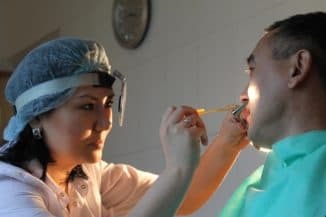 Sometimes it happens that medication treatment does not give those good results that the patient is waiting for. The surgeons come to the rescue. It is especially effective and necessary to perform surgery for hypertrophic rhinitis, when the envelope overgrowth and its thickening occur. The surgeon increases the nasal passages, then it becomes better to breathe. What is done during the operation:
Sometimes it happens that medication treatment does not give those good results that the patient is waiting for. The surgeons come to the rescue. It is especially effective and necessary to perform surgery for hypertrophic rhinitis, when the envelope overgrowth and its thickening occur. The surgeon increases the nasal passages, then it becomes better to breathe. What is done during the operation:
- Overgrown tissue, or rather its excess part is removed.
- Only the posterior ends of the nose are removed from the inferior nasal cavity.
- Moving the sink to the wall.
In the event that the mucosa has not increased much, then the method of burning with trichloroacetic acid is used. If we consider a later stage, then the nitrogen destruction method can be used there. But mostly use the destruction of the shell.
When the human body is already formed, in any form of manifestation of the common cold, the surgical procedure can be considered. But it is forbidden to use it on children.
Medication for
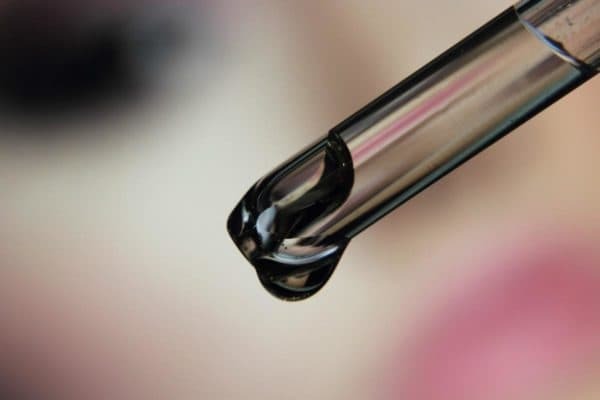
The use of vasoconstrictive drops should not exceed 10 days
Depending on what form of rhinitis occurs, and treatment is prescribed. Treatment of catarrhal rhinitis - drops, antimicrobial ointments, anti-inflammatory ointments. You can treat the coryza Myramistin - a local antiseptic, cleansing the nasal cavity from germs. Vasoconstrictive drops will relieve the nasal congestion. Nafazolin is one of the examples of drops that will help narrow the blood vessels and breathe. It is not necessary to abuse them, as with any drops. The drug takes about 10 days. A person who suffers from dryness in the nose can use sea water or saline solution by using the toilet of the nose. Drops can be replaced with protargol or collargol, they have a binding property.
Medications for hypertrophic rhinitis will not help, without ambulatory treatment can not do. This is because the structure of the nose has changed. And drops and ointments can not cope with this.
With an allergic rhinitis drug treatment will be very useful. The drugs are divided into local and systemic. Under the local understand drops and nasal sprays, under systemic solutions for oral administration, tablets, ointments.
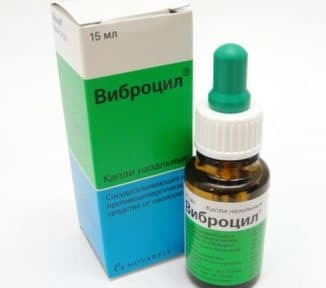 Categories of the mechanism of action:
Categories of the mechanism of action:
- antihistamines;
- vasoconstrictors;
- against inflammation;
- for improving immunity.
Antihistamines are the most common. They help stop the release of mucus by blocking the penetration of the allergen, for example, pollen, wool. The most common are Dimedrol and Suprastin .They are excellent for the manifestations of rhinitis and are effective medicines. The main disadvantage or disadvantage is the negative impact on the nervous system. Lethargy appears. This is the first generation drugs. The second generation is Claritin and Zirtek. Elimination of symptoms and treatment of allergic rhinitis occurs quickly and has virtually no bad consequences. The course of treatment lasts about two weeks. But it must be taken into account that it is not necessary to allow the penetration of allergens, then the treatment will be effective.
Vasodilators include such drops as Nazivin, Vibrocil, Naphthysine. You do not need to abuse them. The more you apply them, the more the body gets used to and does not resist.
To improve immunity, it is recommended to use Sinuret, but only if they are prescribed by a doctor. The product is available in several forms: drops, tablets and syrup. The drug has practically no negative consequences. A person who has intolerance to the components, can not take them.
Against inflammation use drugs that have hormones. Many do not want to use drugs with this composition. But they should not be afraid, because the drops do not penetrate the body. One of the drugs is Nazonex. A similar drug Amavis and Fliksonase. These drugs are used topically. Sometimes they may not help in solving the problem. Prescribe systemic drugs, such as Diprospan. It is used to inject injections into the body.
Folk remedies

Lemon is one of the most effective folk remedies for the treatment of rhinitis
Any reasonable treatment combined with folk methods will give a good effect. For centuries and centuries folk recipes were collected and checked from the common cold at home. Several folk techniques in the treatment of the common cold, which can be used in the  home.
home.
- Use of herbs and herbal remedies. Drink an infusion of peppermint over a half glass. And you can use both adults and children. And it is recommended to wash your nose. Recipe: 4 g of mint pour boiling water 0.5 cup. Let it brew, wrap, drain and take.
- The mokritsa garden also helps with treatment. Infusion draw in the nose.
- Snatch plantain and St. John's wort, dry, grind and inhale. The same can be done with oregano.
- Bee juice from the beet in the nose, but give a little bit of it to brew to start wandering.
- Honey and Kalanchoe are mixed and drunk with infusion of St. John's wort or melissa.
- Inhaling the smoke of the husks of onions, you will relieve yourself of stuffiness.
- To remove swelling, use lemon and salt. First, draw in the lemon juice, then digest salt solution.
Consequences of
Chronic rhinitis has a negative effect on the entire body. Bad sleep, low immunity, loss of exposure, signs of sinusitis - all this can happen if the runny nose was not cured. The emergence of other otolaryngological diseases is also the effect of an untreated disease. Be attentive to your health!
Video
See video of an otolaryngologist on how to treat rhinitis correctly:
Treatment of rhinitis seems simple and straightforward, but it's important not to leave a runny nose untreated, in the hope that it will pass by itself. Your quality of life can suffer, and the level of health will decrease significantly.
